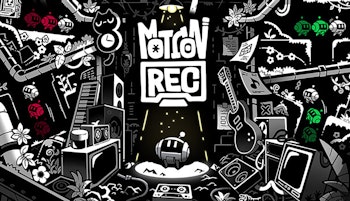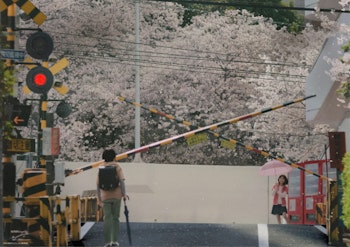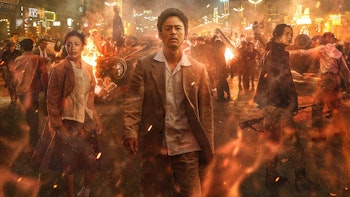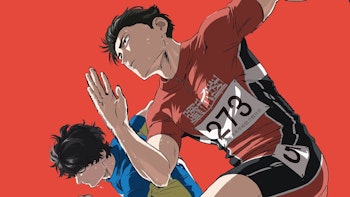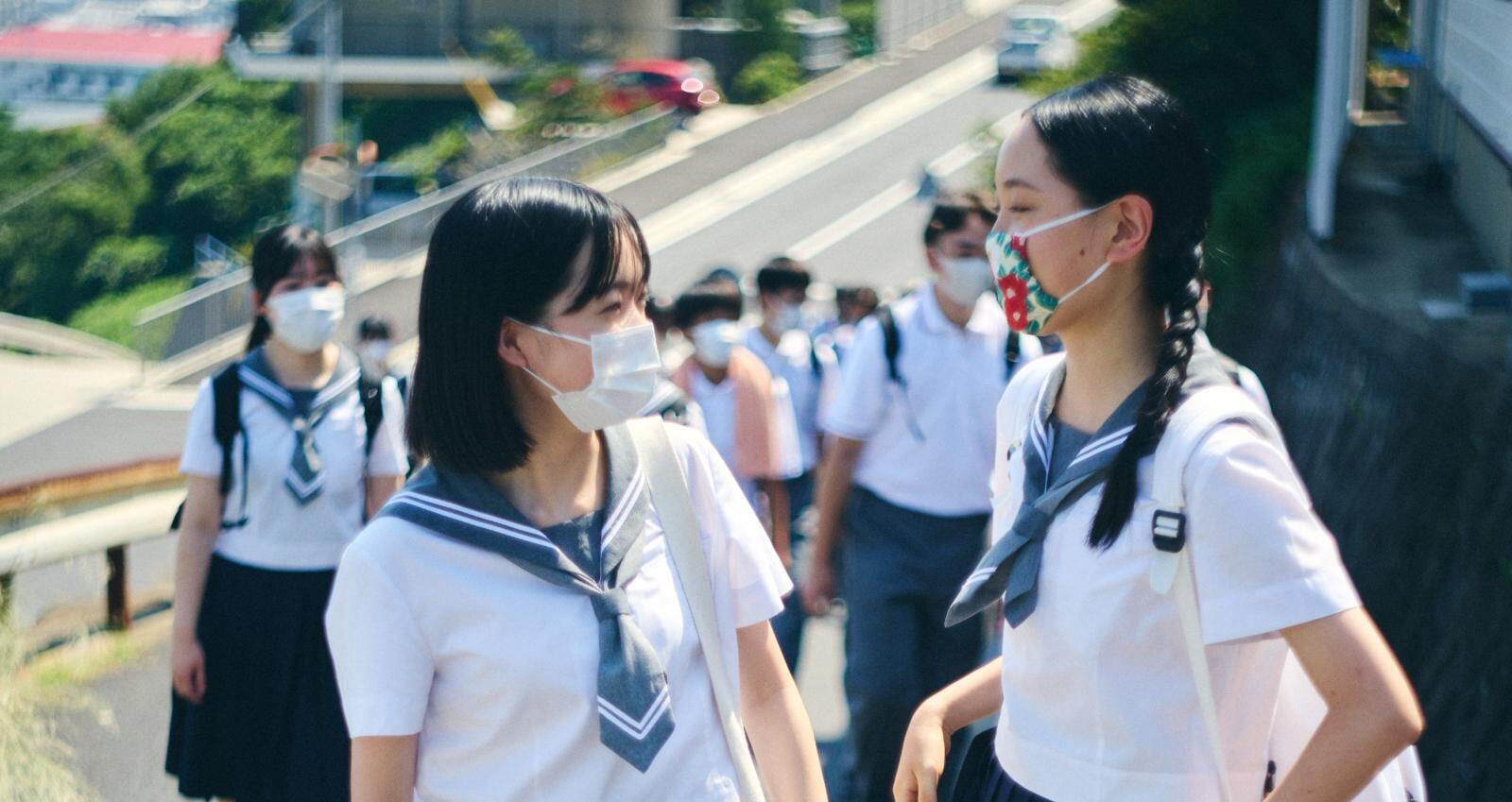
Japan was one of the first countries outside China to truly face the forefront of COVID-19. The Diamond Princess cruise ship found cases of COVID-19 on-board, leading the ship to be quarantined just off the coast of Yokohama for weeks while cases were treated before those on board were allowed to depart. No one knew what was to come in the following years as the grave nature of the pandemic set in for billions worldwide, but it is in these tentative first moments during which Catching The Stars of This Summer sets its stage for a coming-of-age tale against the new normal.
A few weeks later, the world has forever changed. While Japan didn’t fully shutter businesses in the way we saw in other countries, stay-at home ordinances all-but closed many non-essential locations. Soon, even schools closed, resorting to online or no learning until cases were brought under control. When people returned, masking and hand sanitizers were installed, with barriers to friendships and the romanticized elements of adolescence and school from festivals, clubs, and more, were put on hold. It wasn’t essential, so to protect everyone from infection, the memories people cherish from the stressful school days were ripped away from a generation. Even when they returned, they were tinged by the lingering presence of COVID and the ever-presence of masks as a barrier to human connection.
Catching The Stars of This Summer is a rare film seeking to understand just what this experience was like from the perspective of those school-age kids who lived through it. Schools close in the early months of 2020 and everything changes, with graduations and club activities canceled. For Keimoto Asa (Sakurada Hiyori) and her classmates in Sunaura High School in Ibaraki where their school’s stargazing club allowed these space loving students to see beyond, they could no longer do many of their activities or take part in their starcatch contest with other schools. The contest brought these schools together to find stars in the sky as fast as possible, but mostly was an excuse to let these students explore the vastness of space through their telescopes.
All told, it left everyone more isolated. The desire to do something, anything, was hindered by forces they couldn’t control, time was slipping away before their eyes, and the stress and strain of an unseeable illness, families, the lost opportunities, and the friendships drifting away, felt like too much to bear. When the idea comes to host an online starcatch contest, mailing everything necessary for schools to compete to the interested parties who’d then prepare and take part over Zoom. It wasn’t the same, but it was something, and a few schools in Nagano and Tokyo were also interested in taking part.
A refreshing recent trend in the world of the seishun drama is a push back against the timeless alternate universe-esque adolescence within which these stories are usually told with idealism for a more grounded, perhaps less rose-tinted but ultimately more relatable story. It’s not that there isn’t isnt a place for having fun with an idealized youth. But it’s also true that films like I Have a Secret (also a novel adaptation) have found an audience because they reach out to a younger generation increasingly lost amidst the disintegration of the social contract and the expected life sold to them as children in an increasingly turbulent world. Being assured their anxieties are normal and that they aren’t alone has value, and it’s a feeling that this film instills into a story of the COVID pandemic from the very first scene by being blunt and realistic to the uncertainty of what it was like to live through those times.
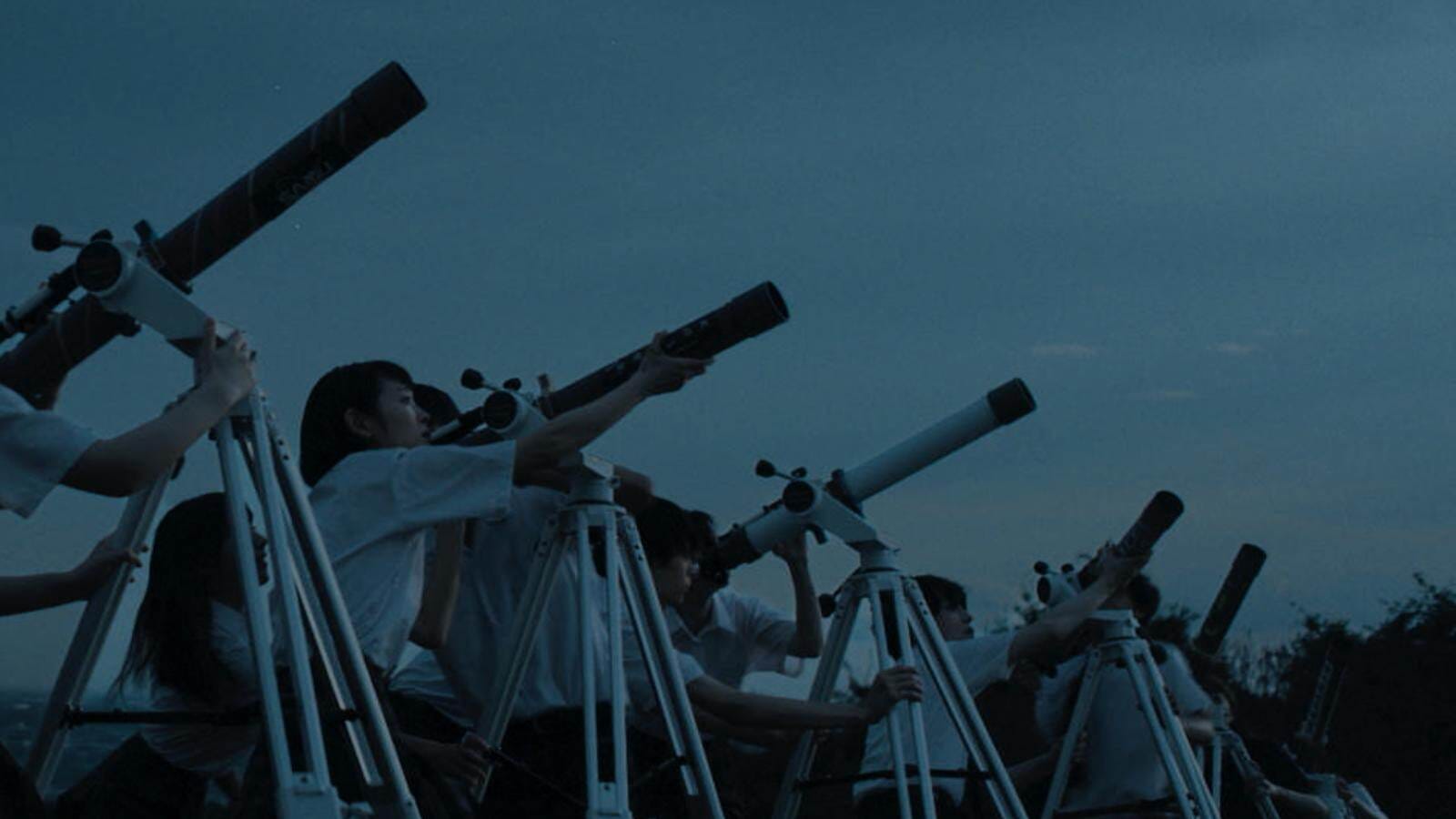
You see it from the opening scene. Without the magnitude of the crisis clear, the warnings of hand sanitation and masks is heard but laughed off when out of sight. Attitudes change when the magnitude of the crisis becomes clear, but the desire to escape somewhere a mask can be removed is bubbling to the surface alongside frustration at the world for inflicting this upon us. Even amidst the small catalogue of COVID media, there’s often an abstraction from the reality of living through the period that ignores the human contradictions in the face of it. No one was perfect following these rules. People were warned to social distance, but they still reached out to hug a friend to reassure them it was ok when it became too much. People knew the rules, but they wanted to do anything in their powers to find a loophole that allowed their activities to continue unabated, even if they knew the need to be safe. It’s human to want to find normalcy in the unimaginable, and it’s the instigator for the online starcatch contest: a chance for this normal event of the calendar to continue despite everything.
The success of Catching The Stars of This Summer comes not just from its stellar writing that reaches an empathetic hand to its audience and reflects their pain in every scene, but also its acting. The cast for this film are all in their early 20s and lived through a school life irrevocably altered by the pandemic. These frustrations of being forced apart from their friends both physically and by being unable to express themselves behind a mask are all too real for them, and you see their own experiences come to life through these characters on screen, expressing all this even behind a mask.
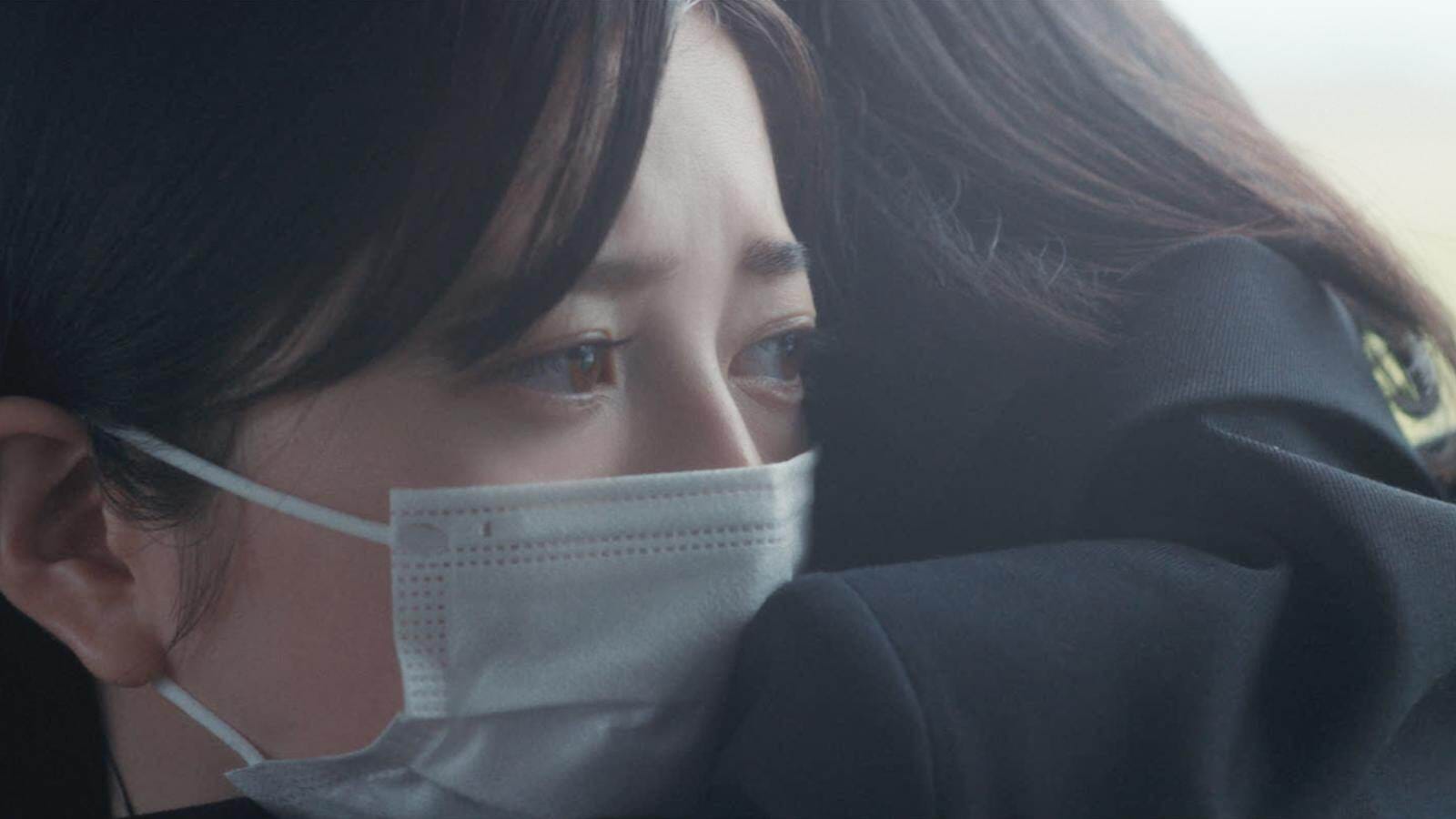
The reason this film is so important is that it’s the first seishun film in some time that I feel directly looks its audience of teenagers and young adults in the eyes and assures them their anger over the last five years of lost time is valid. These are people who lived through COVID, experienced school amidst it, creating art for that generation that faces the trauma and begins the process to move on from it. Seeing the frustrations of the pandemic contrasted to the hope the contest brings to them in these times, thematically linked to the vastness of space and the Starcatch Contest as an escape from their planetary fears for something far beyond where their problems seem meaningless is not only relatable, it’s powerful. Even when kept apart, the night sky connects all of us. We aren’t alone.
Haruka Nakamura, for their soundtrack, deserves particular praise in bottling the vastness of space with the intimate desire to connect into something that sounds poetic, mournful, yet hopeful. It’s the glue that ties these disparate pieces together.
Film, both in Japan and abroad, have barely explored the surface of the societal grief of living through and losing people and experiences to COVID, and to a degree it’s understandable. It was traumatic, it was such a jarring departure from the familiar, and its impact continues to be felt. We adapted, but we lost too. Life has returned to a semblance of normal, but the lingering impact, as well as the virus itself, still hover around. Yet it’s also true that art has always been our way to process trauma, both personally and as a collective. By ignoring it the injury of the pandemic continues to grow and inflict itself against both ourselves and the broader population.
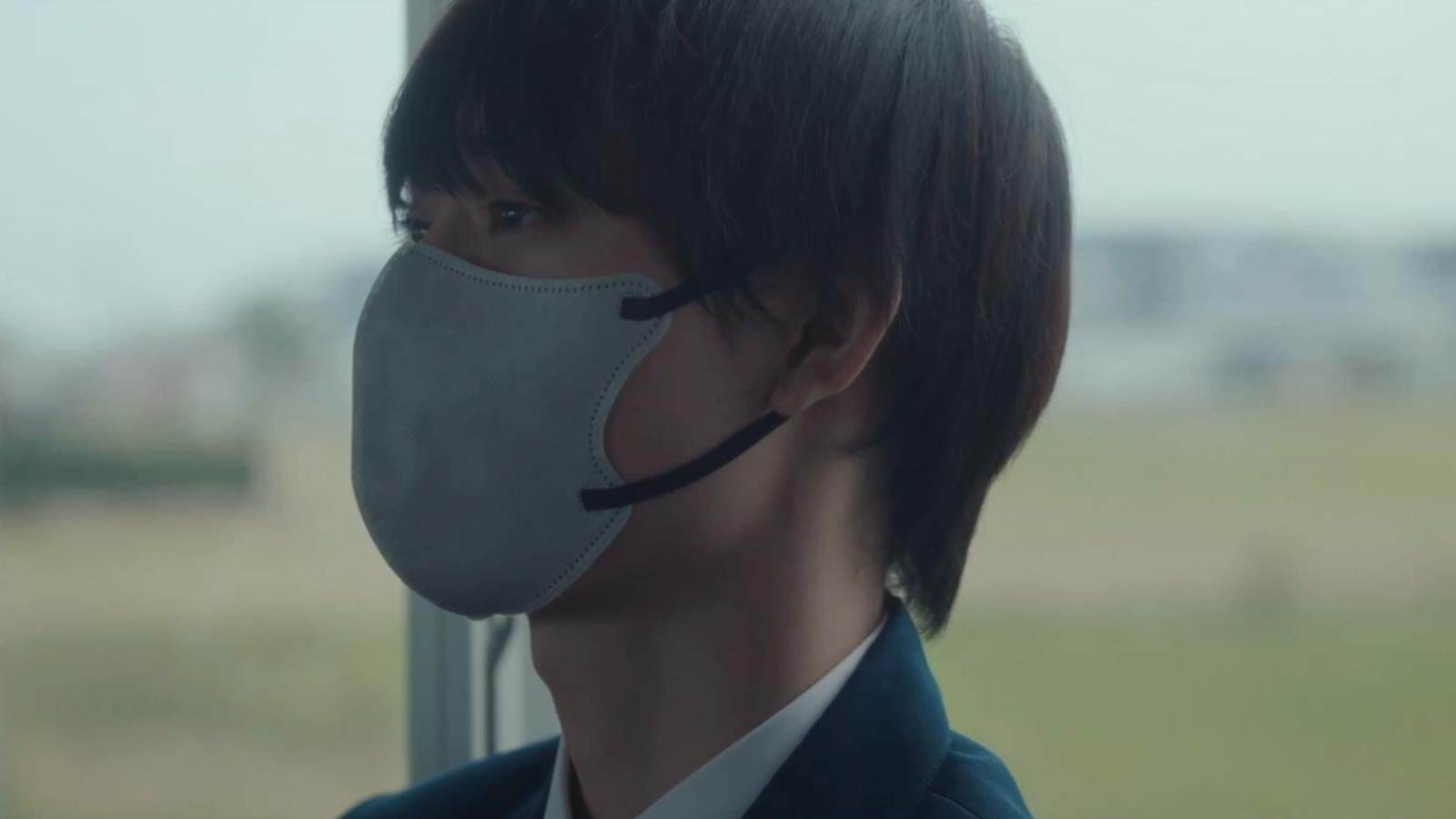
There have been recent attempts to close that gap, particularly in literature and with films like Frontline, a thriller exploring the Diamond Princess crisis. They’re vital pieces of cinema. We all lost something in 2020, whether it was the people we loved or time, and I felt tears streaming down my cheeks as my own lost opportunities flooded back during Catching the Stars of This Summer. When it all became too much I joined these isolated kids, connected by a shared passion, and looked at the one thing no crisis can take from us.
We looked to the stars.
